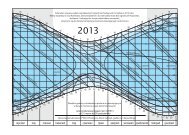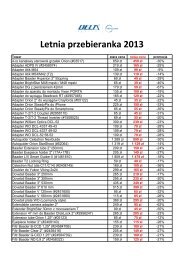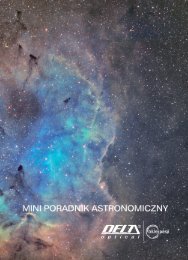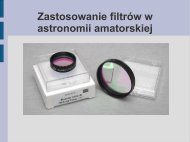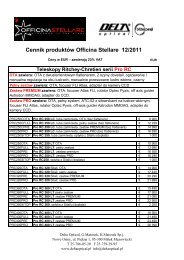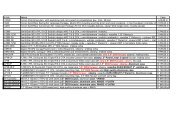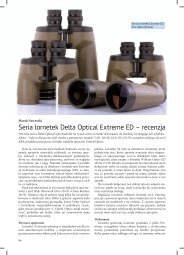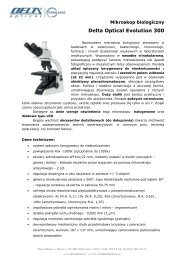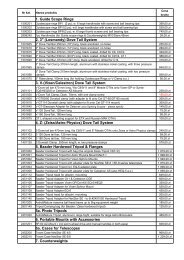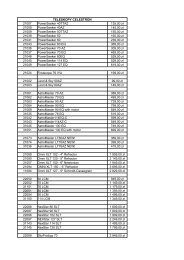Officina Stellare's Veloce RH200 Astrograph - Teleskop-Express
Officina Stellare's Veloce RH200 Astrograph - Teleskop-Express
Officina Stellare's Veloce RH200 Astrograph - Teleskop-Express
You also want an ePaper? Increase the reach of your titles
YUMPU automatically turns print PDFs into web optimized ePapers that Google loves.
S&T Test Report<br />
Left: As explained in the text, full-frame DSLR cameras work best when used with special adapter rings. Center: The Riccardi-Honders<br />
optical design in the <strong>RH200</strong> has a full-aperture corrector with an aluminized spot on its back side forming the Cassegrain secondary<br />
mirror. Right: Some camera setups have limited clearance with the optional RoboFocus system (see the accompanying text for details).<br />
tip-tilt adjustments for squaring it to the scope’s optical<br />
axis. The focuser was also fitted with an optional Robo-<br />
Focus motor drive that has a starting price of about $400<br />
and can run upward of $600 depending on the electronic<br />
package ordered with it.<br />
Multiple Sweet Spots<br />
The <strong>Veloce</strong> <strong>RH200</strong> has a lot going for it. The one thing<br />
that immediately catches the eye of even casual astrophotographers<br />
is its unusually fast f/3 focal ratio, which<br />
makes it an ideal instrument for recording faint nebulosity.<br />
It also has 8 inches of aperture, and it is aperture, not<br />
f/ratio, that is the critical factor for imaging faint stars.<br />
Next on the list is its 600-mm focal length and corresponding<br />
image scale of 344 arcseconds per millimeter,<br />
which is enough to resolve fine detail in nebulous objects.<br />
And then there’s field coverage. The <strong>RH200</strong> is spec’d to<br />
cover a 43-mm imaging circle (spanning a 4.1° diameter<br />
field). This imaging circle is big enough to cover a fullframe<br />
DSLR or the popular Kodak KAI-11000 “full-frame”<br />
sensor used in many astronomical CCD cameras. But,<br />
as some of the images with this review show, I also had<br />
excellent results shooting with an even-larger-format<br />
KAF-16803 CCD camera, which requires an imaging<br />
circle 52 mm in diameter for full coverage. When I shot<br />
pictures with the <strong>RH200</strong>, only the very corners of the<br />
large-format chip had degraded star images.<br />
In my opinion, the real “sweet spot” for the <strong>RH200</strong><br />
is when it’s connected to an astronomical CCD camera<br />
having the highly popular KAF-8300 chip. The result is<br />
a system with an image scale of 1.86 arcseconds per pixel<br />
and a very uniformly illuminated field of view covering<br />
1.7° by 1.3°. In the interest of full disclosure, such a setup<br />
is ideal for the medium-field, deep, narrowband imaging<br />
that I like to do. But as much as I’m attracted to the<br />
<strong>RH200</strong> because of these numbers, they are meaningless<br />
if the astrograph doesn’t perform well under the stars.<br />
And that’s where the <strong>RH200</strong> really showed its mettle.<br />
Left: An unprocessed snapshot of the Pleiades in strong moonlight shows that only modest vignetting occurs when a full-frame DSLR<br />
camera is fitted with the large-aperture adapter shown above. Right: Even the brightest stars, such as Zeta Orionis in this 2-hour<br />
H-alpha exposure of the Horsehead Nebula, produce relatively small halos and no ghost images when recorded with the <strong>RH200</strong>.<br />
62 April 2013 sky & telescope



